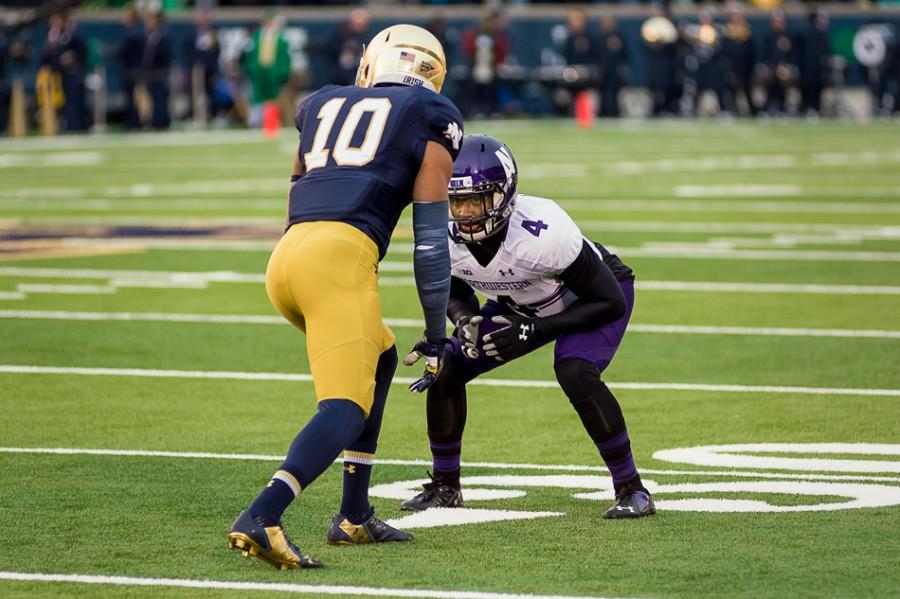Football: For Wildcats’ kick coverage, success means avoiding the spotlight
Nathan Richards/Daily Senior Staffer
Jarrell Williams lines up a punt return play. The junior cornerback has been an integral part of the Wildcats’ kick coverage as a dedicated special teams player.
November 21, 2014
Gameday
It’s almost always a thankless job.
So it goes for junior Jarrell Williams. The reserve cornerback rarely sees the field when Northwestern is playing defense, instead garnering playing time as a part of the Wildcats’ kickoff and punt coverage units.
Taking the field at the butt of uneventful drives or sandwiched between commercial breaks, players such as Williams don’t see the spotlight until their unit makes a mistake, as was the case in NU’s game against Minnesota when the Cats surrendered a game-winning kickoff return touchdown.
“Basically it was guys doing their own thing and not doing what they’re supposed to do,” Williams said. “Lane execution is big. … You have to stay in your lane.”
Exacerbating the concentrated outrage that accompanies a botched special teams play, few fans understand the planning and coordination that goes into successful kick coverage.
Williams said it’s much more than just “running down” and tackling the ball carrier, and in many ways the preparation of the special teams units mirrors the preparations of the offense and defense.
“A lot of it has to do with knowing your assignment,” he said. “It’s seeing the ball, seeing where the returner is going, seeing where the blockers are going in order to do what you have to do to make a tackle.”
That situational readiness isn’t taken lightly by the coaching staff. When asked how often the team practices its kick coverage concepts, William’s response was an immediate “everyday.”
Linebackers coach Randy Bates doubles as the coach for the kick coverage units, and he offered some insight to the behind-the-scenes game-planning that requires so much drilling by players like Williams.
“It’s just like an offensive or a defensive play,” Bates said. “Your job, especially on the defensive side when you’re on a kickoff or a punt, is to counteract what they’re trying to do with your scheme.”
NU’s kick coverage hasn’t excelled this season — the Cats rank a below-average 76th nationally (out of 128 teams) in average opponent kickoff return yardage and a middling 65th in average opponent punt return yardage — and Bates attributed that to injuries on offense and defense that have sapped the special teams units of their usual starters.
Bates said the replacement players’ unfamiliarity with his schemes has hurt the effectiveness of the kickoff and punt return coverage groups.
“When we started losing some guys, that’s when you start getting guys who have never played,” he said. “That’s when issues happen. … Teams lose that probably shouldn’t have lost.”
Bates qualified the struggles of NU’s kick coverage, but for coach Pat Fitzgerald the line between success and failure on special teams coverage has been much less nuanced.
“We haven’t given up touchdowns (besides to Minnesota),” he said. “That’s productive.”
It isn’t exactly high praise from the coaching staff, but that’s a sentiment shared by Williams. He said the kick coverage units have the right scheme and players but have significant room for improvement when it comes to execution.
“I think we can be better,” he said. “We have the guys, we just have to do a lot better job of getting down there and tackling them inside the 20.”
A tackle inside the 20 isn’t glamorous, but it’s the result everyone playing, coaching or rooting for the Cats wants. Williams and company will keep toiling away on special teams for the remainder of the season, and if everything goes according to plan, fans will continue to not notice.
Email: [email protected]
Twitter: @BobbyPillote


